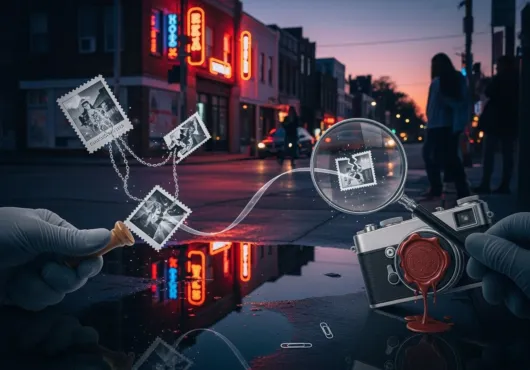Friction removed, choices misplaced.
You open a shiny new app. The first screen beams at you like a hotel concierge who’s already swiped your card. Big, friendly “Continue” button. Timer-ish animation. No obvious “No thanks.” You’re not signing up—you’re being swept along. Somewhere between the confetti and the gradient, your phone quietly traded your time, your data, and a slice of your attention to “make things easier.”
If you can’t skip, it’s capture. No Skip/Cancel, pre-checked boxes, “personalize” loops—this isn’t onboarding, it’s consent by momentum.
How to spot it fast. Forced full-screen steps, dark defaults (contacts, notifications, payment), “Just one more step…” with no off-ramp.
Keep your exit. Bail early, screenshot every step, use throwaway email/permissions, finish in a sandbox—then revoke, export, delete.
The industry calls this “simplified onboarding.” Cute. In practice, it’s a shell game. The “easy path” is preselected like a rigged menu, and the honest path is a staircase in the dark. Tap, tap, tap—and suddenly your notifications are chattier, your contacts are imported, and your privacy is shaved down to decorative trim. Not because you picked it. Because you were designed into it.
The New Hospitality
Modern onboarding works like a boutique hotel that hands you complimentary champagne and then charges your room for the bottle. Friendly copy, pastel buttons, and a single “Get Started” funnel that quietly bundles three or four permissions under one cheerful tap. Decline is technically available, but only if you already know the secret handshake: odd placement, low-contrast text, double-confirmation, or the always-popular “Not Now” that—surprise—means “Later we’ll do it anyway.”
If you stop and look, the pattern is obvious. The first modal primes you with “personalized experience.” The second suggests “recommended settings.” By the third, the system treats “skip” like a temporary mistake to be repaired next session. The flow is less a conversation and more a guided tour—where the guide’s commission depends on how many switches end up flipped.
How the Trick Works
It’s not the single click that gets you; it’s the stack. Bundles. Defaults. Microcopy that implies you’re rejecting the product, not a setting. Stacked modals that restart if you dodge one request. Lazy “one-tap setup” that hides attribution to third-party SDKs. And the all-time favorite: the big blue button that speeds you through while graying out the path that would’ve preserved your autonomy. You’re not “opting in.” You’re being carried in on a velvet conveyor belt.
User Playbook: Keep Your Hands on the Wheel
Deny first, then add back only what breaks. Install on airplane mode, open once, refuse everything. Re-enable case by case when a feature won’t function without it. You’ll discover most features work fine without the kitchen sink.
Hunt the side doors. Check in-app browsers, social logins, and “free trial” prompts. They love to sneak fresh permissions mid-session. Do a quarterly permission reset in your OS settings; your future self will applaud.
Builder Checklist: Ship Like You Respect People
Make choices atomic. One request, one reason, one screen. No bundling.
Symmetry or it doesn’t count. If “Allow” is a bright button, “Not now” can’t be a ghost link in a dusty corner. Equal weight, equal speed, equal clarity.
True off. If a user disables something, it stays off across updates and devices. No seasonal re-prompts dressed as “new features.”
Show the cost. “Turn on X” must disclose battery, data, and privacy impact in plain language. If the trade is fair, the user will still choose it. If it isn’t, you just learned something about your product.
A Little Honesty Goes a Long Way
You can make great software without training users to ignore their gut. The truth is, most teams don’t need half the data they hoover up—they need product-market nerve. Tell people what you want, why you want it, and what they get for it. If your model only works when you trick them during the welcome party, your model doesn’t work. And if you’re a user, remember: every “default” is someone else’s business plan. Pick yours.
This Isn’t Just UX; It’s Memory Theft
Onboarding is where a product teaches you how to treat it. When that moment is gamed, you don’t just lose a setting—you lose the habit of saying no. The interface erases friction, and with it, the tiny pause where you decide who you are in the system. That’s expensive. Not just in dollars, but in attention you’ll never get back. The app wants to be “seamless.” So does a pickpocket.



